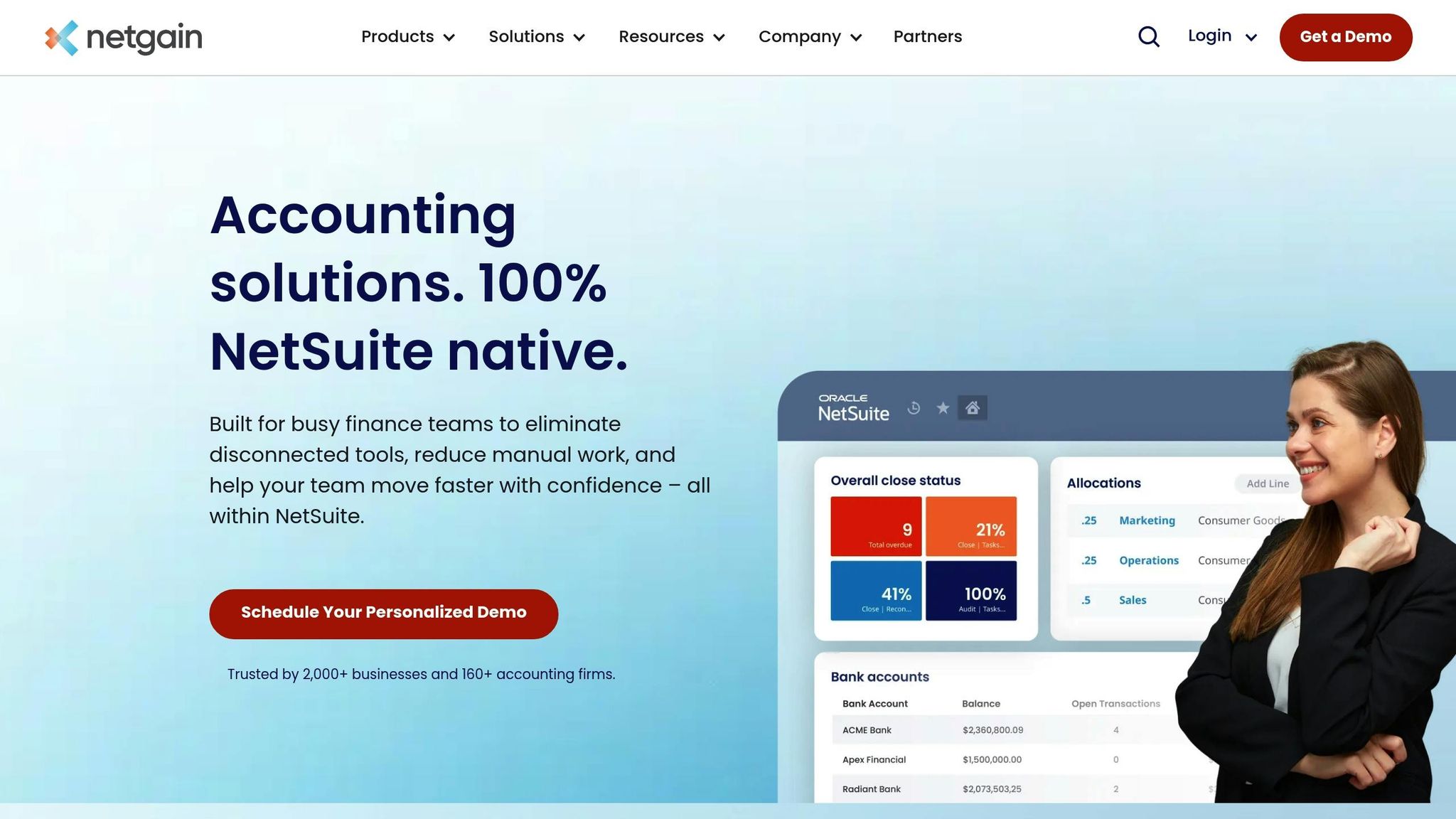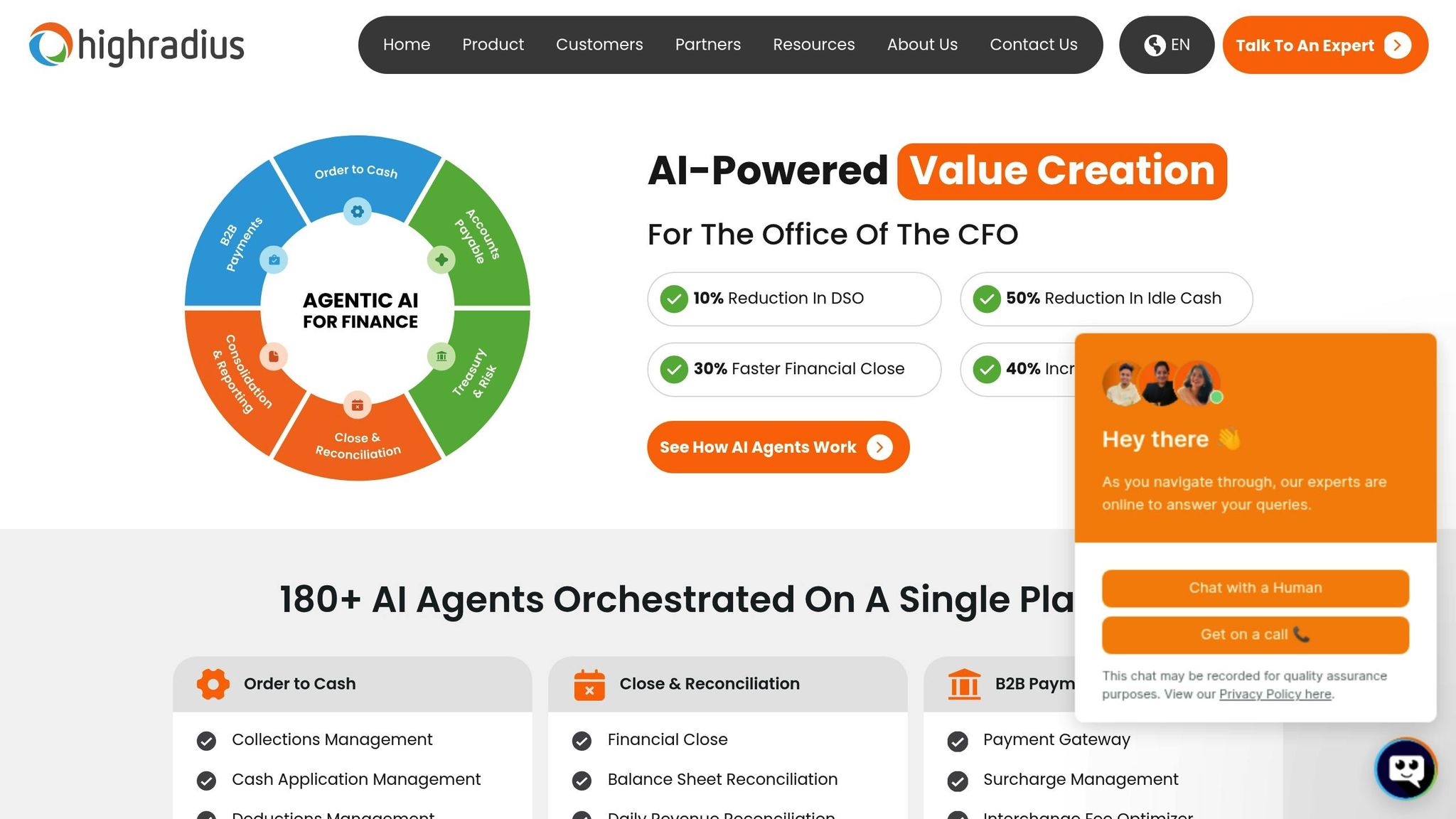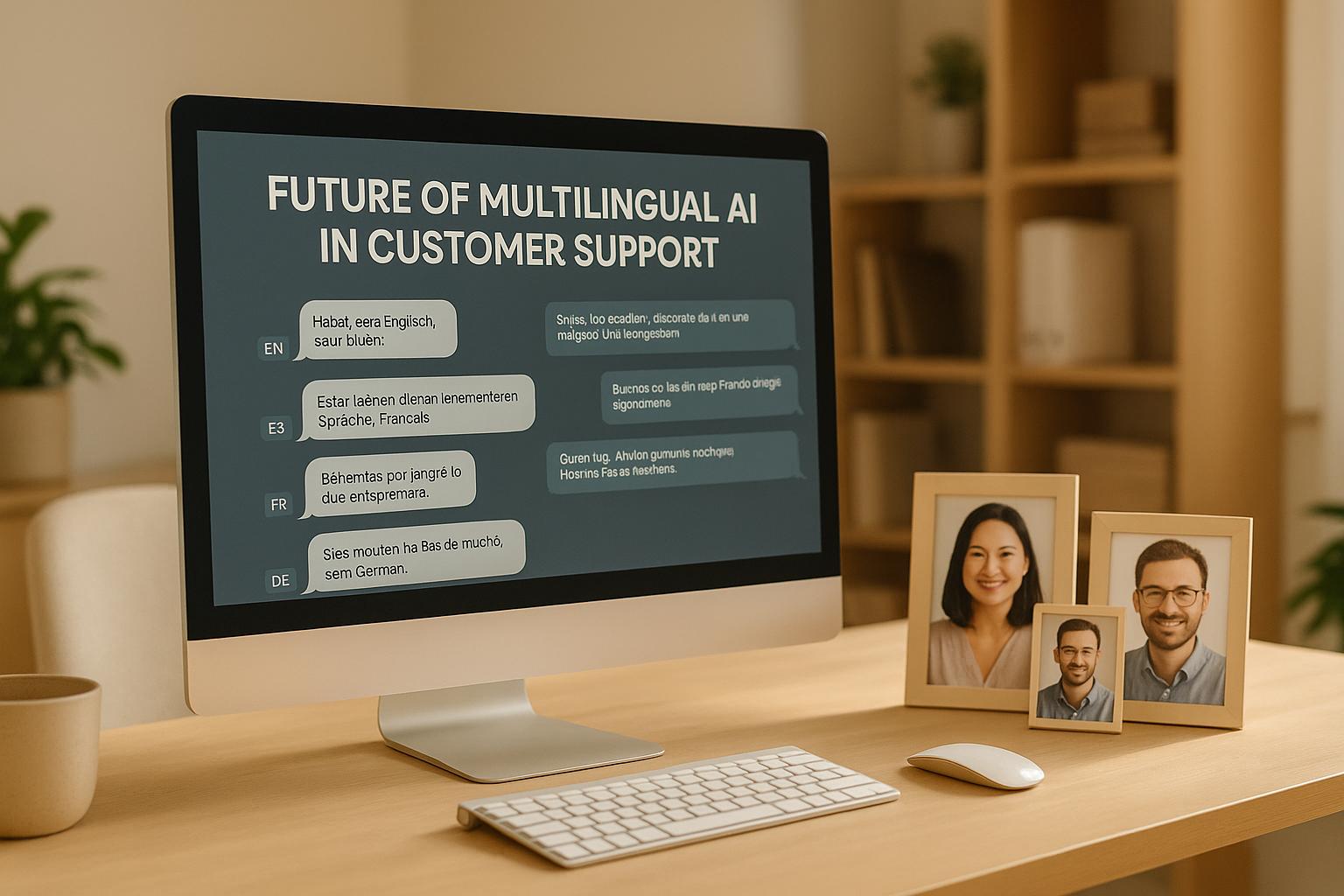AI tools are transforming audit trail management, replacing manual processes with automated, real-time solutions. They improve compliance, reduce errors, and save time. Here's what you need to know:
- Why It Matters: Audit trails ensure transparency and compliance with laws like SOX and GDPR, avoiding fines up to $22.07M or 4% of annual revenue.
- AI Benefits: Automates data collection, monitors continuously, and generates accurate reports. Companies report cutting audit preparation time by 30% and increasing productivity by 66%.
- Key Examples: JPMorgan Chase reduced review time from 360,000 hours to seconds. Wells Fargo streamlined compliance with automated tools, and Mayo Clinic enhanced HIPAA compliance with AI-based monitoring.
- Top Tools: Netgain for accounting workflows, HighRadius for anomaly detection, and Credo AI for tracking AI system decisions.
AI simplifies compliance, saves resources, and minimizes risks. Whether you're a small business or a large enterprise, adopting AI tools can make audit trail management faster, more accurate, and cost-effective.
Hackathon 2: Season 2 - Use Case 1 | Audit Reporting - Use of AI | CA. Premnath Degala
Problems with Manual Audit Trail Management
Relying on outdated manual methods for managing audit trails puts businesses at serious risk. From compliance issues to inefficiencies and reputational damage, these challenges are amplified under today’s increasingly complex regulatory demands.
Complex Compliance and Regulatory Pressure
Navigating the ever-changing regulatory environment in the U.S. is no small feat, especially when relying on manual audit trail management. Regulations vary widely by industry, and failing to meet compliance standards can lead to hefty fines and legal troubles.
"Audit trails are essential for maintaining transparency and accountability in financial and operational processes, ensuring compliance with regulations, and enhancing security by tracking user activities." - Vice Vicente, Audit Expert
Take, for example, companies handling personal data. Compliance with GDPR is non-negotiable, and non-compliance can result in severe penalties. Manual processes often fail to keep pace with these evolving requirements, leading to missed deadlines and overlooked details. Incomplete or suspicious audit trail entries can trigger not only financial penalties but also reputational harm, eroding customer trust and market standing.
The strain is even more evident in large organizations, where 46% identify forecasting business expenses as a top priority. Instead of focusing on strategic growth, teams are bogged down by hours of manual compliance work, pulling resources away from initiatives that drive progress.
Manual Errors and Slow Processes
Manual audit trail management is a breeding ground for inefficiencies and inaccuracies. Human error is a major concern - research shows that manual data entry mistakes occur up to 40% of the time. On top of that, an internal audit can consume over 800 staff hours, draining valuable resources.
These manual processes are not only slow but also prone to errors that compromise security and compliance. Poorly organized filing systems and improper storage often lead to missing paperwork, creating gaps in the audit trail that can flag compliance violations.
"An audit log is a key aspect of risk management for the company, as well. A detailed list of date and time stamps, along with user IDs and activity logs, can help administrators to identify potential problems or weaknesses in the record." - DFIN Solutions
The slow pace of manual logging often results in incomplete or inaccurate data, especially when reporting deadlines loom. This reactive approach to compliance management leaves organizations vulnerable, as they struggle to keep up with the demands of fragmented and inefficient systems.
Disconnected Data and Limited Real-Time Reporting
One of the biggest hurdles of manual audit trail management is the fragmentation of data across various systems. When information is spread across platforms like CRMs, spreadsheets, and email threads, it creates a tangled mess that slows down operations and complicates compliance efforts.
A staggering 70% of AECO firms still rely on disconnected tools for project management, and 80% of organizations report data quality issues due to these disjointed systems. This lack of integration leads to duplicate entries, errors, and reporting gaps that hinder decision-making.
"Disconnected data isn't just a nuisance - it's a threat to your margins, your schedule, and your reputation." - Newforma, Inc.
The financial sector offers a clear example: nearly half of banking professionals (47%) cite manual data collection as their biggest obstacle to meeting reporting deadlines. Without real-time synchronization, accounting systems often display outdated or inaccurate information, causing inventory issues and flawed financial reports.
These discrepancies between financial records and inventory values can raise red flags during audits. Additionally, manually retrieving data from disparate systems is time-consuming and error-prone, limiting an organization’s ability to adapt to shifting market demands. Without real-time visibility, executives are left making decisions based on outdated or incomplete information, forcing businesses into reactive strategies that hinder their competitive edge.
How AI Tools Automate Audit Trails
AI tools are reshaping how businesses handle audit trails by automating data collection, monitoring, and reporting. Gone are the days of manually digging through spreadsheets or chasing down missing documents. With AI, companies can streamline these processes, ensuring accuracy and saving valuable time.
Automated Data Collection and Quality Checks
AI tools integrate directly with existing systems, like ERP platforms and databases, to capture data automatically and validate its accuracy continuously. This eliminates manual errors and flags potential issues immediately, keeping data consistent and reliable.
Take Bennett Thrasher, for example. This accounting firm implemented Trullion's AI-powered platform, which automatically extracted critical terms from purchase documents that could impact accounting decisions. Isaac Heller, Trullion's CEO and cofounder, emphasized the benefits:
"Automation will streamline repetitive tasks, such as data collection, processing, and evidence gathering. This affords teams more time to perform the complex audit work that requires human discernment."
Similarly, CapinCrouse, a firm with 200 employees, used DataSnipper to link data from various PDFs into one seamless testing workbook. This reduced both testing time and training efforts while improving overall quality.
AI also ensures data formatting is consistent, even when pulling information from multiple sources. By standardizing how data is structured, AI makes analysis and reporting far more dependable. Once the data is captured and formatted, these tools keep a close eye on it, immediately spotting irregularities.
Continuous Monitoring and Problem Detection
Beyond collecting and validating data, AI platforms monitor activity in real time. They track access patterns, login behaviors, and transaction flows to detect anomalies as they happen. This is critical, given that organizations face an average of 2,200 identity-related security incidents each year, costing about $9.8 million annually. According to the Ponemon Institute, companies with advanced AI security tools detect and contain breaches 74% faster than those without.
AI's strength lies in its ability to recognize patterns and flag unusual behaviors that human reviewers might overlook. Alan Anderson, CPA and founder of ACCOUNTability Plus LLC, explains:
"AI can give you 100% of the population, which makes anomaly detection extremely reliable when it's based on proper parameters set by the auditors."
The results speak for themselves. Align Technologies used MindBridge to analyze billions of transactions, uncovering discrepancies that manual reviews would have missed. This not only improved financial reporting but also cut down on audit preparation time. Similarly, Polaris adopted AI-driven risk assessments with MindBridge, identifying material risks in their financial systems and strengthening compliance with financial regulations.
AI doesn't just react to issues - it predicts them. By forecasting potential compliance breaches, businesses can shift from reactive to proactive audit trail management.
Simplified Reporting and Documentation
AI tools make compliance reporting a breeze, generating audit-ready reports complete with traceability matrices that meet regulatory requirements. The time savings are substantial - AI can reduce review cycles by up to 90% while enhancing accuracy across the board.
These tools go beyond basic reports, producing detailed compliance documentation like risk assessments and audit summaries with remarkable efficiency. This allows auditors to address potential problems immediately, rather than uncovering them months down the line.
Consistency in documentation is another major win. AI systems harmonize practices across various facilities, ensuring corporate compliance policies are applied uniformly. This proves invaluable during regulatory reviews, where inconsistency often raises red flags.
AI also keeps up with evolving regulations. For instance, in late 2024, the FTC launched Operation AI Comply to crack down on deceptive AI marketing practices, including action against DoNotPay for false claims about its legal services. AI tools can adapt to such changes, updating workflows to maintain compliance.
The impact of these tools is undeniable. The market for AI-based regulatory solutions is projected to surpass $7 billion by 2030. Additionally, organizations using machine learning-based fraud detection models have reduced financial losses by up to 52% compared to traditional rule-based systems. AI is clearly changing the game, making audit trail management smarter, faster, and more reliable.
Best AI Tools for Audit Trail Automation
As we dive deeper into how AI is reshaping audit trails, it's clear that several tools are leading the way in helping businesses streamline their processes. Below are some of the standout solutions that are making a measurable difference for companies today.
AI for Businesses: A Hub for AI-Powered Solutions

For small and medium-sized enterprises (SMEs) exploring AI tools, AI for Businesses acts as a one-stop directory. It curates a wide range of AI applications tailored to SMEs, including tools for automating audit trails, managing financial reports, and ensuring compliance.
This platform offers three subscription tiers designed to meet various business needs:
- Basic Plan: Free access to a limited selection of AI tools, perfect for businesses just starting with AI.
- Pro Plan: For $29/month, businesses get full access to all tools, along with priority customer support.
- Enterprise Plan: Custom solutions and dedicated support are available for larger organizations that require tailored integrations.
What makes AI for Businesses stand out is its practical approach. The platform helps companies identify tools that can streamline operations, with a particular focus on solutions for audit trails and regulatory compliance.
Netgain: Streamlined Accounting and Audit Management

Netgain zeroes in on automating accounting workflows, specifically within NetSuite. Its specialty lies in reconciliations, amortizations, and task tracking, offering real-time financial insights. For instance, AML RightSource reported cutting their financial close time in half and gaining better confidence in their numbers after adopting Netgain's NetClose solution.
Netgain automatically tracks every transaction and change, generating audit-ready reports that meet regulatory standards. This not only ensures compliance but also significantly reduces the time spent on month-end closes.
HighRadius: Detecting Financial Anomalies in Real Time

HighRadius is another standout, offering AI-driven Record-to-Report (R2R) solutions. Its platform automates the financial close process and identifies anomalies as they happen. The results speak for themselves: a 30% reduction in close times and a 50% decrease in manual efforts.
HighRadius processes over $10.3 trillion in annual transactions, with its AI detecting anomalies with over 95% accuracy. Its Account Reconciliation Software achieves a 90% auto-match rate for transactions and automates 95% of journal postings. By 2027, the company aims to reach 90% overall automation, ensuring continuous monitoring and immediate issue resolution.
Credo AI: Keeping AI Systems Accountable

Credo AI focuses on detailed and transparent audit logs for AI systems. As businesses increasingly depend on AI for critical operations, tracking every data input, processing step, and decision output becomes essential. This is especially critical in regulated industries, where every algorithmic decision must be documented and justified. Credo AI ensures that businesses maintain compliance while keeping their AI systems auditable.
Why Investing in AI Tools Matters
The right AI tool can do more than just save time - it can protect your business. Automated solutions can cut audit preparation times by 30% and improve execution speed by 40%. They can also reduce audit costs by up to 50%. With 32% of businesses facing audit-related financial liabilities exceeding $1 million in 2024, choosing the right tool isn't just about efficiency - it's about safeguarding your company's bottom line.
These tools demonstrate how AI can transform audit trail management. The next step? Pinpointing the solution that aligns perfectly with your business needs.
sbb-itb-bec6a7e
Main Benefits of AI-Driven Audit Trail Automation
AI-powered audit trails are transforming compliance and risk management while significantly cutting costs. Here's a closer look at how AI is reshaping audit trail management.
Improved Efficiency and Reduced Errors
AI systems slash compliance costs by up to 30% and reduce the time spent on regulatory tasks by as much as 80%. By automating data capture, these systems not only minimize errors but also free up valuable resources for more strategic work.
Unlike manual processes, which are prone to human error, AI ensures consistent accuracy across thousands of transactions. As Oluwadamilola Olooto, Senior Auditor at Mazars Nigeria, explains:
"Datasnipper has been instrumental in reducing the time spent on repetitive manual documentation, streamlining the review process for managers and partners."
AI-driven tools also leverage machine learning and natural language processing (NLP) to process data at speeds no human team can match, enabling faster and more precise analysis.
| Feature | AI-Driven Automation | Manual Methods |
|---|---|---|
| Accuracy | High, minimizes human error | Prone to errors |
| Efficiency | Fast processing and analysis | Time-intensive and labor-heavy |
| Monitoring | Real-time, continuous | Periodic reviews |
| Reporting | Automated report generation | Manual compilation and verification |
| Scalability | Easily handles large datasets | Limited scalability |
Real-Time Data for Smarter Decisions
AI systems provide continuous monitoring, instantly detecting anomalies and enabling immediate corrective actions. Real-time analytics allow businesses to track cash flow, monitor expenses, and identify fraudulent activities as they occur. For instance, in financial services, AI can flag suspicious transactions, send alerts, or even freeze accounts when necessary.
Beyond fraud detection, companies use AI insights to optimize supplier monitoring and automate procurement decisions, helping control costs and improve operational efficiency.
Enhanced Compliance and Record Keeping
With regulatory requirements becoming increasingly complex - 85% of respondents in a recent PwC Global Compliance Survey reported heightened complexity over the past three years - AI proves invaluable in maintaining detailed, automated documentation that aligns with these standards. Real-time alerts and scans help organizations address issues before they escalate into violations.
AI simplifies audit readiness by consolidating data from multiple systems, creating clear audit trails, and generating compliance reports that meet regulatory standards. This is particularly critical for industries like healthcare, where HIPAA violations can result in fines ranging from $100 to $50,000 per violation, with an annual cap of $1.5 million. By maintaining continuous audit readiness, AI helps organizations avoid such costly penalties.
Additionally, AI reduces the risk of human error in data classification and ensures proper data storage and retention. Automated processes create comprehensive documentation that proves regulatory compliance, safeguarding organizations from legal and financial risks.
The adoption of AI in compliance has surged in recent years. According to the latest McKinsey Global Survey, AI adoption has grown from about 50% six years ago to 72% in 2024. This trend highlights AI's ability to streamline and improve compliance processes in ways manual methods simply cannot achieve.
How to Pick the Right AI Tool for Your Business
AI-driven audit trails can boost efficiency and help maintain compliance, but selecting the right tool is crucial. For example, 64% of internal audit teams plan to adopt AI within the next year. Meanwhile, the compliance workflow software market is expected to hit $7.1 billion by 2032. To make the right choice, consider how well the tool integrates with your systems, scales with your needs, and simplifies reporting.
Works with Your Current Systems
The first thing to check is integration compatibility. Your AI tool should work seamlessly with existing ERP, payroll, and accounting systems. Poor integration can lead to data silos and compliance issues.
If your systems are outdated or store data in incompatible formats, middleware or APIs can help bridge the gap. AI tools rely on clean, consistent data to work effectively, so ensuring compatibility is key.
A great example of this is the A14 Integrated Delivery Team in the UK. By using FlowForma’s platform, they avoided a £10 million fine and sped up their processes by at least five times while maintaining complete audit trails.
Before committing to a tool, ask vendors to demonstrate how their solution handles your actual data formats - not just generic examples. This will help you avoid costly system overhauls down the line.
Grows with Your Business and Changing Rules
Your AI tool should not only fit your current needs but also adapt as your business grows and regulations evolve. Scalability and the ability to keep up with regulatory changes are non-negotiable.
Look for features like predictive compliance analytics and tools for tracking regulatory updates. These can help you anticipate compliance challenges and stay ahead of new requirements.
With 85% of compliance professionals reporting increased regulatory complexity in the last three years, flexibility is critical. Choose a system that can be updated without needing a full replacement.
As Trent Russell, Founder of Greenskies Analytics, puts it:
"AI agents are not just a step forward; they represent a seismic shift in conducting audits, assessing risks, and managing compliance."
Ask vendors about their update schedules and how they adapt to new compliance standards. A reliable tool should evolve as the rules change.
Easy-to-Use Reports and Clear Records
Even the best AI tool won’t be effective if your team struggles to use it. User-friendly reporting is essential for adoption and to minimize compliance risks.
The tool should allow real-time collaboration, so stakeholders can access up-to-date information and reports from a centralized platform. Look for features like customizable dashboards and automated report generation tailored to your compliance needs.
| Reporting Feature | Why It Matters | What to Look For |
|---|---|---|
| Automated Generation | Saves time and reduces errors | Scheduled reports, custom templates |
| Real-Time Access | Speeds up decision-making | Live dashboards, instant alerts |
| Audit Trail Documentation | Ensures compliance during reviews | Detailed logs, timestamp records |
| Customizable Formats | Meets specific regulatory requirements | Multiple export options, branded reports |
During vendor demonstrations, test the reporting interface to ensure it’s intuitive for your team. Pay attention to whether the outputs are clear and actionable.
AI-powered document analysis can also be a game-changer. Tools that use natural language processing to analyze documents and flag inconsistencies can save time and improve accuracy.
Ultimately, the best AI tool is one your team will consistently use. Prioritize intuitive designs and straightforward documentation over tools that are overloaded with features but hard to navigate.
Conclusion
AI tools are reshaping audit trails by replacing labor-intensive manual methods with automated, real-time systems. This transformation is already well underway - by 2025, 57% of finance professionals had integrated AI into their operations, with an additional 14% planning to adopt it.
The results speak for themselves. Some AI tools have slashed manual workloads by up to 50% and shortened close times by 30%. On top of that, 63% of audit and finance professionals have reported enjoying a better work-life balance thanks to AI-driven automation.
Government agencies like the SEC and FDA are also turning to AI to strengthen compliance, as seen in their recent initiatives and updated guidance.
Looking ahead, new technologies are set to push audit trail automation even further. Predictive analytics and blockchain integration are paving the way for enhanced transparency and efficiency. Meanwhile, advancements in machine learning promise to take automated compliance monitoring to the next level.
For businesses eager to embrace AI-powered audit solutions, platforms like AI for Businesses provide tailored collections of tools specifically designed for small to medium enterprises and growing companies. With options ranging from free basic plans to enterprise-level solutions, these resources make it easier for businesses to find the right tools to streamline their audit processes.
FAQs
How do AI tools help streamline compliance and reduce errors in managing audit trails?
AI tools make compliance easier and reduce mistakes in managing audit trails by automating activity tracking. Instead of relying on manual record-keeping - which can be error-prone - AI ensures every transaction is documented accurately and in order. This seamless tracking also helps spot inconsistencies early, discouraging fraudulent behavior and boosting accountability.
With the ability to analyze massive amounts of data in real time, AI can quickly flag unusual patterns and send alerts about potential problems. This not only improves the precision of regulatory reporting but also cuts down on the time and resources needed for audits. The outcome? A quicker, more dependable audit process that supports compliance and lowers operational risks.
What should I consider when choosing an AI tool to automate audit trails for my business?
When you're choosing an AI tool to automate audit trails, here are some key factors to consider:
- Compliance and security: Look for a tool that aligns with your industry's regulations and takes data privacy seriously. Protecting sensitive information should be a top priority.
- Integration and scalability: The tool should integrate smoothly with your current systems and be flexible enough to grow with your business or adapt to regulatory updates.
- Ease of use: Opt for a solution that's straightforward to use and backed by dependable customer support. This ensures your team can fully leverage its features without unnecessary hassle.
Focusing on these aspects will help you find a tool that not only boosts efficiency but also keeps compliance and security in check.
How does AI improve efficiency and reduce costs in audit trail management?
AI is transforming audit trail management by taking over repetitive tasks like data extraction and transaction testing. This automation allows auditors to dedicate more time to important work, such as assessing risks and planning strategically. As a result, audits not only move faster but also become more accurate and less prone to human error, leading to more dependable financial reports.
On top of that, AI's ability to process and analyze massive datasets in record time helps uncover anomalies and potential compliance risks before they become major issues. This proactive approach can help businesses avoid expensive regulatory penalties. By simplifying these processes, companies can cut labor costs, improve compliance, and enhance overall operational efficiency.


